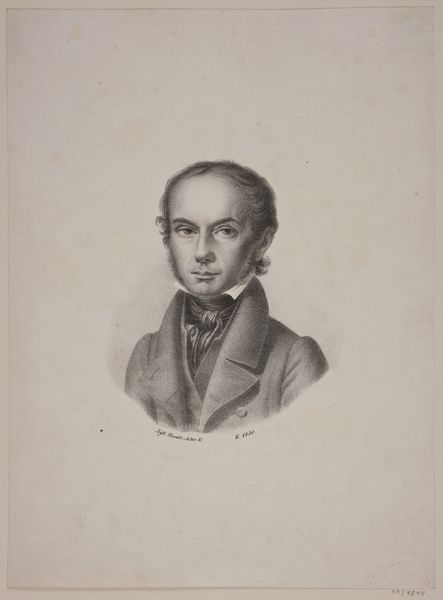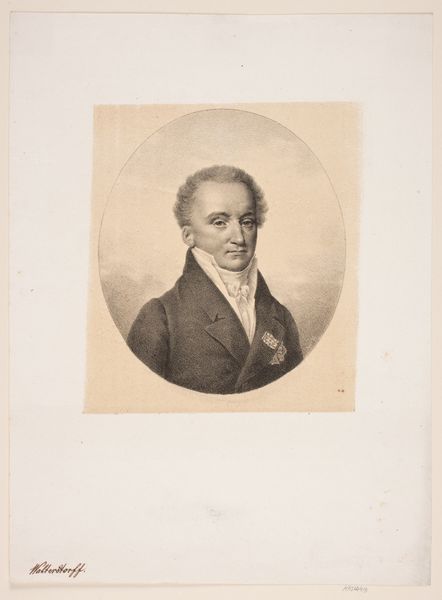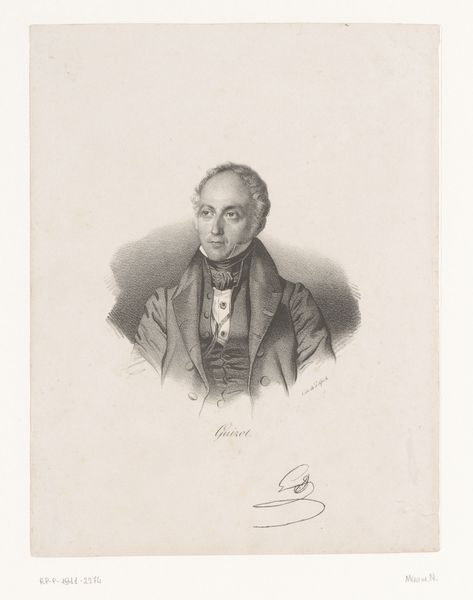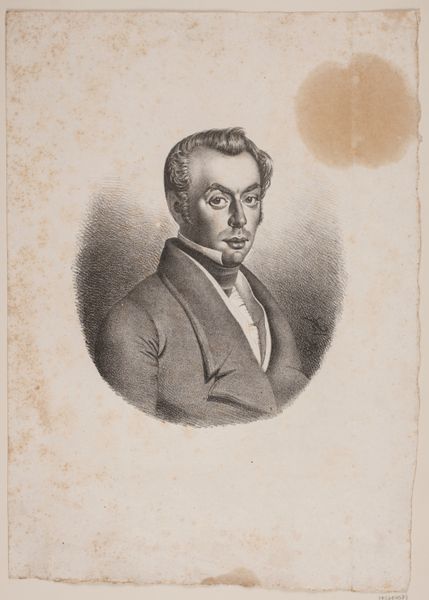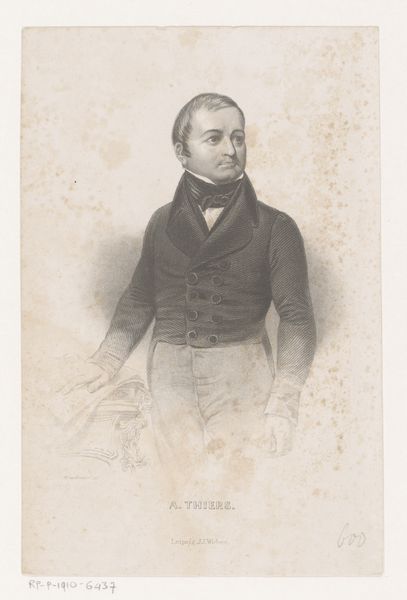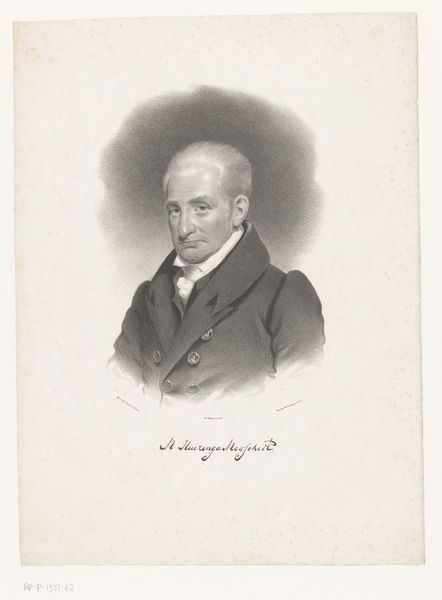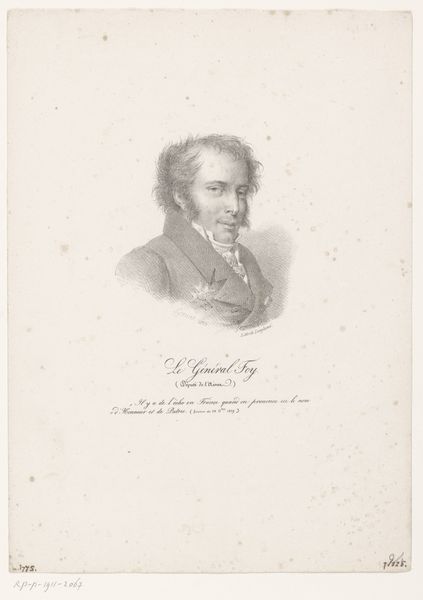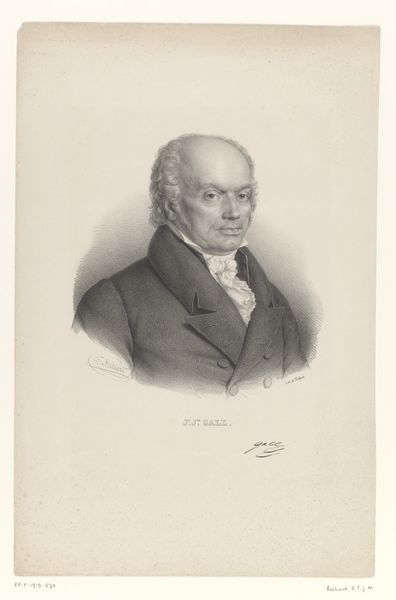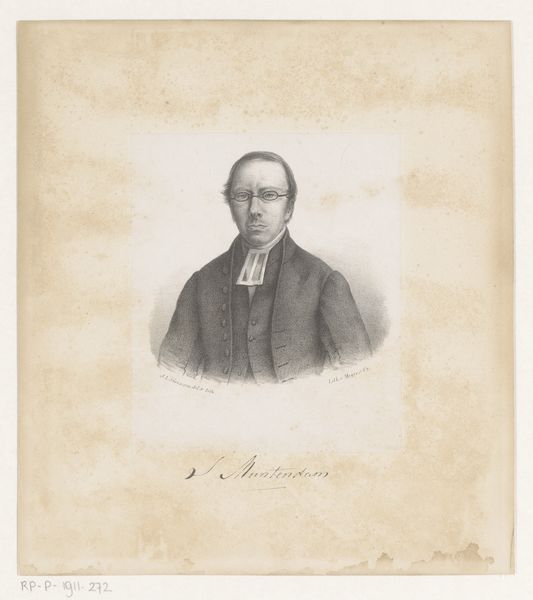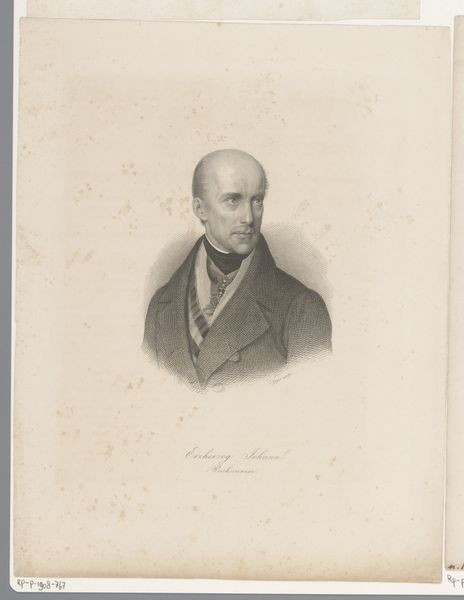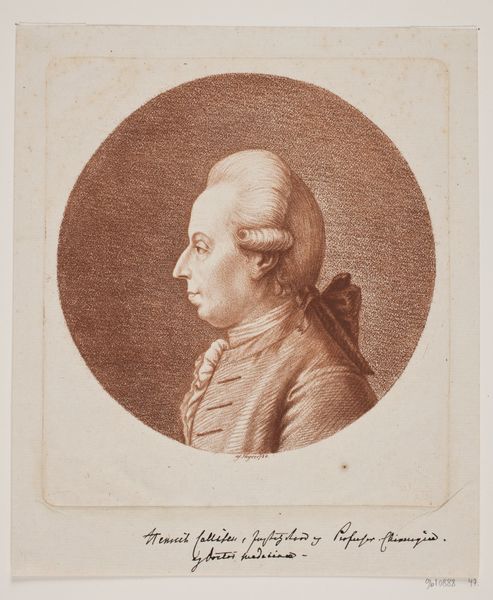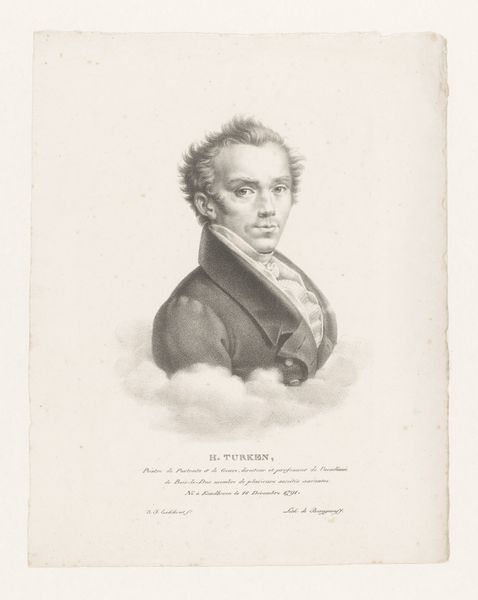
drawing, lithograph, print
#
pencil drawn
#
drawing
#
lithograph
# print
#
charcoal drawing
#
pencil drawing
#
realism
Dimensions: 324 mm (height) x 229 mm (width) (bladmaal)
Editor: So, this is a lithograph and pencil drawing, "N. L. H\u00f8yen," from 1830. The detail is amazing for a print! He seems very proper, very contained. What strikes you about this portrait? Curator: What jumps out at me is how this image operates within the power dynamics of representation. Consider the context: 1830. Who was typically represented in portraiture at this time, and what did that representation signify in terms of class, gender, and social standing? This isn’t just a likeness; it’s a statement about visibility and access. What do you know about the role of portraiture in constructing social identity in the 19th century? Editor: Well, portraits were definitely for the elite, a way to solidify their status. I hadn't thought about how a lithograph democratizes that a bit. Was H\u00f8yen also part of that elite, or was he challenging the system just by existing in this medium? Curator: Exactly! And how does the artist's choice to render him with such precision – almost hyper-realism for the time – reinforce or subvert traditional ideals of beauty and masculinity? We must ask: Whose gaze are we invited to adopt, and what assumptions does that gaze carry? Can we see him beyond those assumptions? Editor: I guess it makes me think about how much control the sitter has, even in a medium like this. The detail almost feels intrusive, yet he also appears dignified. It's a negotiation, right? Curator: Precisely. A negotiation where the power dynamics between artist, sitter, and audience constantly shift. How can we interpret this single image, its artistic choices, as part of a much larger cultural dialogue about visibility, representation, and power? That's where the real meaning lies. Editor: This has really made me rethink how even seemingly straightforward portraits engage with bigger social questions. Curator: Art isn't made in a vacuum; every piece has a social and historical context to consider, making our viewing experience even more complex.
Comments
No comments
Be the first to comment and join the conversation on the ultimate creative platform.
